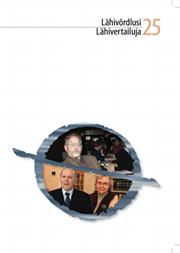Tingiv kõneviis eesti B1- ja B2-taseme kirjalikus õppijakeeles kui keeleoskuse arengu näitaja
The conditional mood as indicator of increased language competencein in Estonian B1 and B2 level written learner language
Author(s): Mare KitsnikSubject(s): Language studies, Language and Literature Studies, Foreign languages learning, Morphology, Lexis, Language acquisition, Finno-Ugrian studies
Published by: Eesti Rakenduslingvistika Ühing (ERÜ)
Keywords: second language acquisition;morphosyntax;lexicon:frequency;accuracy;complexity;
Summary/Abstract: The article described the use of the conditional mood in written exam texts of adult second language learners of Estonian at B1 and B2 level. Be study on which the article is based is part of a larger study, the goal of which is to develop linguistic descriptions to accompany the functional descriptions of B1 and B2 level given in the Common European Framework of Reference for Languages (CEFR 2007). This is to be achieved by identifying the linguistic categories typically used at these levels, describing their frequency of use, analyzing their complexity and accuracy (Housen et al. 2012), determining the connections between the categories and various discourse functions, and specifying descriptors that serve to distinguish between the two levels.As the conditional mood is used far more at B2 level than at B1 level (Kitsnik 2014), it is one of the categories distinguishing B2 from B1 which requires more detailed study. Be results of the study discussed in the article show that at both B1 and B2 level, only the personal voice present tense forms of the conditional mood are used. At B1 level, the conditional is used with eight different verbs,most frequently tahtma ‘to want’ and saama ‘be able to’. At B2 level, the conditional is used with 23 different verbs, most often with tahtma ‘to want’, olema ‘tobe’, võima ‘to be able to’, pidama ‘must’, soovima ‘to wish, desire’, and soovitama‘to recommend’.At B2 level, the conditional is used in more morphological forms than those found at B1 level (the first and third person singular), and it also appears in a range of other constructions (with an object, with a predicate, and in both the main and subordinate clauses of complex sentences) in addition to the B1-level construction of “verb in conditional + infinitive”. As regards discourse functions, the conditional is used at both B1 and B2 level primarily to express politeness. Linguistic accuracy increases at B2 level in the constructions which are used also at B1 level.
Journal: Lähivőrdlusi. Lähivertailuja
- Issue Year: 2015
- Issue No: 25
- Page Range: 137-171
- Page Count: 35
- Language: Estonian

